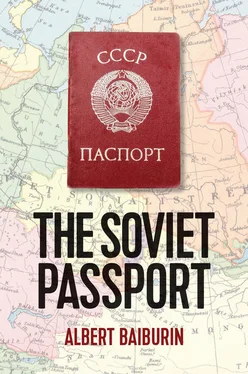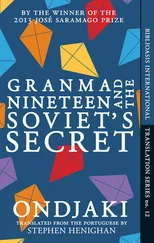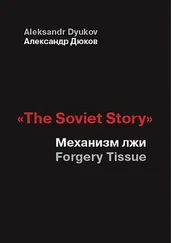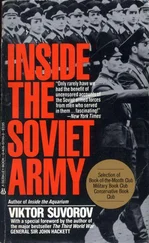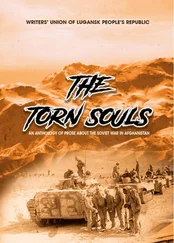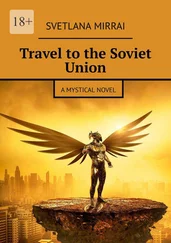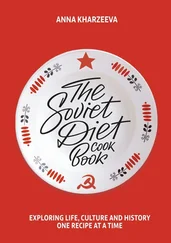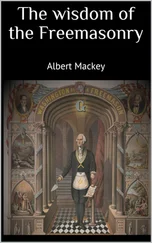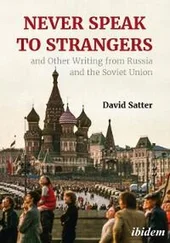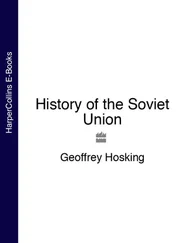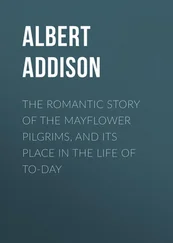Yet there are also many examples where people say that in Soviet times the passport was hardly ever used. It was essential in only a small number of cases, since people didn’t very often change jobs or start studying somewhere. The main thing was that it existed. It was the presence of the passport that was important, rather than its usage. The passport made a Soviet person ‘just the same as everyone else’, and it was belonging to the body of society that gave the passport its true value.
The passport evoked a variety of emotions, depending on the situation, and not only negative ones. A huge number of passport holders, especially among the post-war generations, were very proud of it. But very surprisingly there wasn’t always a connection with its owner. There was a sense of estrangement from the passport, even in those cases where the person experienced positive emotions about owning it. The process of acquiring it was often traumatic, and using it meant coming into contact with officialdom, something that Soviet people tried to keep to a minimum. The main reason for such wariness towards the organs of the state was that ordinary citizens were often made to feel that they were requesting something – even in situations where they weren’t actually asking for anything. This flagrant inequality in relation to queues and all the other circumstances which went with them meant that people tried to deal with officials only in cases of extreme necessity.
Just how controversial is the status of the passport can be illustrated with the help of one simple question: to whom does the passport belong? To the state, or to the person? Is it ‘my passport’? In reality, it is rather, ‘the passport which is about me’. It’s like a sign hung around one’s neck, or the label on one’s clothing. What is there in it which is specifically mine ? Only the signature and the photograph. When it has these it becomes mine, and any changes that are inserted in the passport are the result of changes in me or in what has happened to me (such as the registration of a marriage or of children). The holder of the passport is officially known as its owner . However, an object which belongs to us can be lost or we may simply get rid of it. We are obliged to hold on to our passport, and we risk a fine if we lose it. Making a false passport is considered a crime – not against its owner, but against the state. It turns out that it is at one and the same time both ours and yet not ours; and this dual ownership is the chief characteristic of this document which is unique in so many ways. Nonetheless, the passport is issued by the structures of the state and is issued for temporary use (the maximum period is limited by the lifespan of the ‘owner’), and because of this the owner can never totally feel that it is solely their property.
The Soviet passport was used to certify who a person was; but usually a person does not need to confirm their ‘I’. Or, to be more accurate, they may have to do this but in this case a document is hardly going to help. From this point of view the passport is needed first and foremost for officialdom; but since a person has to interact with officials, the passport becomes something that is essential for the person themselves.
Let’s try to define what exactly a document is. We understand instinctively that among the wealth of texts and artefacts that mankind has created, documents have a special status. This may be simply because they are expected to establish the dividing line between facts and supposition; between the reliable and the unreliable; the truth and the lie; the actual and the imaginary. If this is the case, then they help to create a kind of parallel world, doubling the significance of what society considers to be especially important.
The Great Dictionary of Legal Terminology describes this idea in the following way:
‘Document’: a physical object containing information, consolidated by a man-made method for passing it on in space and time. In automated search and information systems this means any object which is saved within the system’s memory … 5
Clearly, such a definition means that a wide variety of items can be considered as documents. In the first instance there are physical documents, such as certificates or other items created specifically to bear witness to something. Secondly, ‘document’ is often used to refer to all sorts of artefacts that originally had a different purpose (for example, letters, diaries or in principle any object that characterizes a particular era, such as objects in a museum – and not only in a museum). Such evidence from the past is given the status of ‘a document’, although, strictly speaking, in such circumstances the word ‘document’ has only a metaphorical significance. Nowadays the understanding of what constitutes ‘a document’ is used as widely as possible; the tiniest piece of information can be considered as such. 6
Documents have both a specific and at the same time a rather vague status, both in daily life and in academic study. For example, for historians, documents (if we mean written sources) traditionally make up the bulk of their material; but beyond that there are usually texts that originally were not created as documents. The status of ‘documents’ was given to them artificially later as ‘testimony to the past’. Of course, actual documents come into the category of sources, but in the overall mass of evidence they take up a rather insignificant place. Incidentally, in time these ‘documents’ in the widest sense take on the status of ‘genuine’ documents, while real documents lose this status as their shelf-life runs out; yet they remain documents in the wider sense.
Researchers who use documents often consider them to be bearers of objective information about the past. This is helped by the documents’ anonymity. Frequently no author is cited. Nevertheless, any document, even if it comes from the authorities, is always the result of the overlapping interests of various subjects, with different views on the reality it relates to and which is produced by it. As Yury Tynyanov wrote, ‘documents lie, just as people do’. 7So the question of authorship is relevant for documents, too. There are always specific ‘authors’ of texts hidden behind anonymous definitions such as ‘the authorities’, ‘state procedures’ and so on. But as a rule, they remain unknown.
Furthermore, one way or another a document takes into account the point of view of the recipient. Even if the recipient’s position is completely ignored, an imaginary dialogue is created with them. And the recipient is not only the passport holder, but also those who will read it. This is especially significant for the passport, because a whole host of factors – economic, political and others – played a part in its development, as did various administrative levels and departments. So did the recipients themselves, as I shall try to show.
Documents are traditionally studied in such applied disciplines as source studies and archive methodologies. However, there are matters beyond the boundaries of such studies which both produce and use documents, involving people as well as social and state institutions. The anthropological significance of documents is of no interest to these disciplines. There is a wide circle of social phenomena born out of the very functionality of these documents which has hardly been researched at all. This includes the cultural significance that is given to these documents, as well as the specific relations and practices that have come about by their creation and use. 8
In recent times this has started to change. Evidence of this is the project The Status of the Document in Contemporary Culture: Theoretical Problems and Russian Practice , under the guidance of Irina Kaspe. The project’s most significant result was the collective work, The Status of the Document: the Definitive Paper or an Alien Certificate (Moscow, 2013). This was perhaps the first time (at least in the Russian academic tradition) that the question of what ‘the document’ is had been thoroughly examined. This was inspired not just by the appearance of electronic documents, which meant that traditional methods had to be examined in a completely different way (as had happened, for example, in sociological research), 9but also a growing dissatisfaction with the way in which documents of various origins were studied.
Читать дальше
